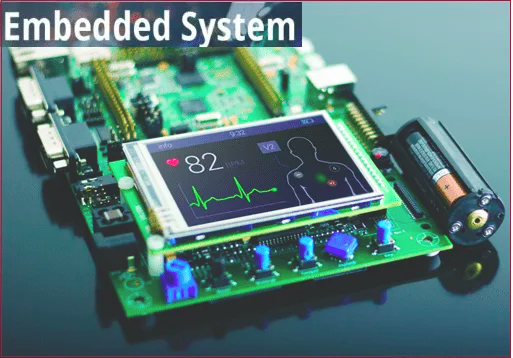Search results: 1377
Please find the attached Google Drive Link of B.Tech. 1st Semester e- Book Bank for uploading on Moodle.
https://drive.google.com/drive/folders/10kDrixk_POUqTXVKMClxoeYvVpazDott?usp=sharing
- Teacher: MR MOHIT TYAGI [ECE]
- Teacher: MS DIKSHA SINGH [ECE]
1. Describe the fundamentals of circuit switching and distinguish complex telephone systems.
2. Differentiate the fundamentals of Space division switching and time division switching.
3. Design, develop and evaluate the telecom traffic to meet defined specifications and needs.
4. Identify the control of switching networks and signalling concepts.
5. Classify the engineering concepts of packet switching and routing which will help to design various switch architectures for future research work.
An embedded system is a microprocessor-based computer hardware system with software that is designed to perform a dedicated function, either as an independent system or as a part of a large system. At the core is an integrated circuit designed to carry out computation for real-time operations.
Complexities range from a single microcontroller to a suite of processors with connected peripherals and networks; from no user interface to complex graphical user interfaces. The complexity of an embedded system varies significantly depending on the task for which it is designed.
Embedded system applications range from digital watches and microwaves to hybrid vehicles and avionics. As much as 98 percent of all microprocessors manufactured are used in embedded systems.

This course is specially designed for the first year Engineering students. It comprises of basic understanding of Electronics Engineering and their application in modern day technology.
1.Understand the concept of PN Junction and devices.
2. Understand the concept of BJT, FET and MOFET.
3. Understand the concept of Operational amplifier
4. Understand the concept of measurement instrument.
5. Understand the working principle of different type of sensor and their uses.
6. Understand the concept of IoT system & Understand the component of IoT system
- Teacher: DR KAMALA PRASAD MISHRA [AS]
- Teacher: Dr. Narendra Kumar [ECE]
- Teacher: Mr. SATYAM MISHRA [ECE]
Course Objectives:
1. To understand the basic concepts of IoT, followed by major components, its layer architecture and how IoT is impacting the industry in the various forms along with major applications.
2. To make students aware about basic concepts of cloud computing, its benefits and different applications along with insights of major service providers.
3. To understand the basic concepts of Blockchain and its underlying technologies with its implementation as cryptocurrencies.
4. To understand the concept of Additive Manufacturing, its applications in various fields and the basic concepts of drones, their assembly and government regulations involved.
5. To introduce students to the upcoming technology and to develop the required skills for practical applications.
Course Objectives:
1. To understand the basic concepts of IoT, followed by major components, its layer
architecture and how IoT is impacting the Industry in the various forms along with major
applications.
2. To make students aware about basic concepts of cloud computing, its benefits and different
applications along with insights of major service providers.
3. To understand the basic concepts of Blockchain and its underlying technologies with its
implementation as cryptocurrencies.
4. To understand the concept of Additive Manufacturing, its applications in various fields and
the basic concepts of drones, their assembly and government regulations involved.
5. To introduce students to the upcoming technology and to develop the required skills for
practical applications.
- Teacher: shruti.pandey
- Teacher: Dr. Narendra Kumar [ECE]
- Teacher: MR AMIT KUMAR [ECE]
- Teacher: MR VARUN GUPTA [EIE]
- Teacher: DR NATWAR SINGH RATHORE [EN]
- Teacher: DR NEERAJ KUMAR GUPTA [EN]
- Teacher: DR SURENDRA KUMAR TRIPATHI [EN]

